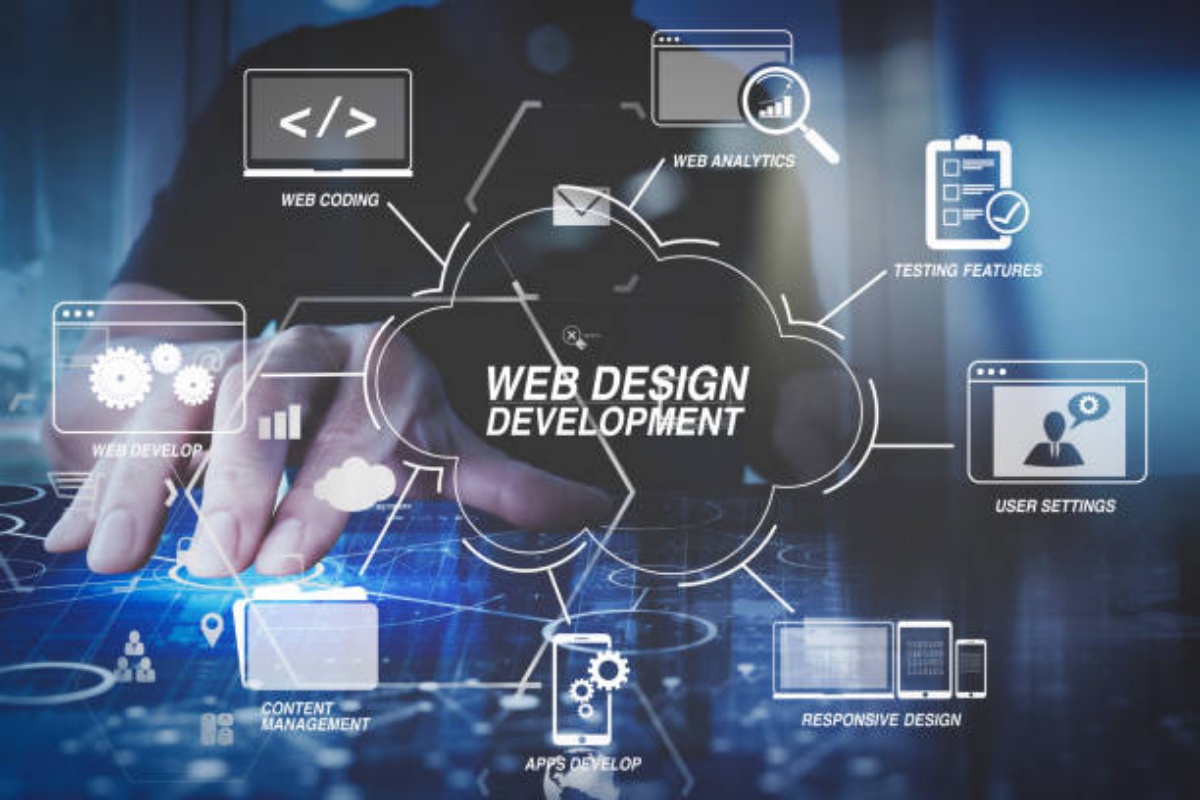Web development is evolving faster than ever, driven by emerging technologies, changing user expectations, and the growing need for faster, smarter, and more engaging digital experiences. As we move through 2025, developers and businesses alike must stay ahead of the curve to remain competitive and relevant.
In this blog, we’ll explore the latest trends in web development that are redefining how websites and web applications are built, optimized, and experienced.
1. AI-Powered Development and User Experiences
Artificial Intelligence (AI) is now central to web development. It’s no longer just about chatbots—AI is influencing everything from design to personalized user experiences.
Key Highlights:
- AI code generation: Tools like GitHub Copilot and ChatGPT are assisting developers in writing cleaner, more efficient code.
- Personalization at scale: AI tailors content and UI dynamically based on user behavior.
- AI in UX/UI: Predictive design and adaptive interfaces improve user interaction and satisfaction.
Pro Tip: Integrate machine learning models to recommend products, automate support, and enhance accessibility on your site.
2. Progressive Web Apps (PWAs) Continue to Dominate
PWAs blur the line between web and mobile apps, providing offline functionality, faster load times, and a native app-like feel.
Why PWAs Matter in 2025:
- Lower development cost compared to native apps.
- Enhanced performance and reliability.
- Seamless installation on desktops and mobile devices.
Example: Twitter Lite and Starbucks PWA have significantly improved user engagement and speed.
3. Headless and Composable Architecture
Headless CMS and composable web architecture are empowering developers with more flexibility.
What’s New in 2025:
- Composable architecture allows selecting best-in-class tools for frontend, backend, and third-party integrations.
- Headless CMS like Strapi, Contentful, and Sanity continue to grow.
- More enterprises are moving toward JAMstack for speed and scalability.
Use case: eCommerce websites are increasingly using headless setups to deliver personalized, lightning-fast storefronts.
4. WebAssembly (Wasm) Adoption is Growing
WebAssembly brings near-native performance to web apps, allowing code written in C++, Rust, and other languages to run on the web.
In 2025:
- WebAssembly is used for real-time video editing, CAD apps, and gaming.
- It’s transforming the way developers build high-performance browser-based applications.
Advantage: Drastically improves performance-heavy tasks like graphics rendering and data processing in browsers.
5. Motion UI and Micro-Interactions
User engagement is directly tied to how interactive and intuitive your interface feels. Motion UI is playing a crucial role.
2025 Trends:
- Fluid animations for transitions, hovers, and state changes.
- Micro-interactions to provide instant feedback and guide user flow.
- Framer Motion, Lottie, and GSAP remain top libraries.
UX Insight: Subtle animations can reduce cognitive load and make interfaces feel more alive and user-friendly.
6. Serverless Architecture and Edge Computing
Cloud-native and serverless computing are transforming backend development.
Benefits in 2025:
- Lower infrastructure management.
- Faster deployment and scaling.
- Edge functions reduce latency by executing logic closer to the user.
☁️ Popular tools: AWS Lambda, Vercel Edge Functions, and Cloudflare Workers.
7. Dark Mode and Accessibility Standards
As web design matures, inclusivity and usability are at the forefront.
Notable Trends:
- Dark mode is now a standard UI feature.
- WCAG 3.0 introduces new metrics for cognitive and visual accessibility.
- More dev teams use tools like Axe, Lighthouse, and WAVE for auditing.
Tip: Design with color contrast, keyboard navigation, and screen readers in mind.
8. Low-Code and No-Code Development
Low-code platforms are reducing barriers for businesses to launch digital products.
2025 Tools to Watch:
- Webflow, Bubble, and Appgyver for frontend design.
- Backendless and Xano for backend logic.
Impact: Speeds up MVP launches, enables business users to participate in development, and reduces costs.
9. Quantum-Safe Cryptography and Security
With the rise of quantum computing, web security is also evolving.
Security Trends:
- Adoption of quantum-safe algorithms is underway.
- Enhanced API security using AI-powered monitoring.
- More apps adopting Zero Trust Architecture (ZTA).
Reminder: Security isn’t optional. Regularly audit your app’s endpoints and data flows.
10. Sustainable Web Development
Eco-conscious design is not just a trend but a necessity in 2025.
How to Build a Green Web:
- Optimize images and assets to reduce bandwidth.
- Minimize JavaScript and third-party scripts.
- Use green hosting providers.
Fact: A well-optimized website not only helps the planet but also ranks better in search engines due to faster load times.
Final Thoughts
Web development in 2025 is more intelligent, modular, inclusive, and performance-oriented than ever before. Whether you’re a solo developer, a startup founder, or part of a large enterprise team, embracing these trends will help you stay ahead in the digital game.
What You Can Do Today:
- Experiment with AI tools in your workflow.
- Try out a headless CMS for your next project.
- Consider converting your app into a PWA.
- Audit your site’s accessibility and performance.
Let’s Hear from You
Which web development trend are you most excited about? Have you already started implementing any of these? Share your thoughts in the comments or connect with us for a consultation.

